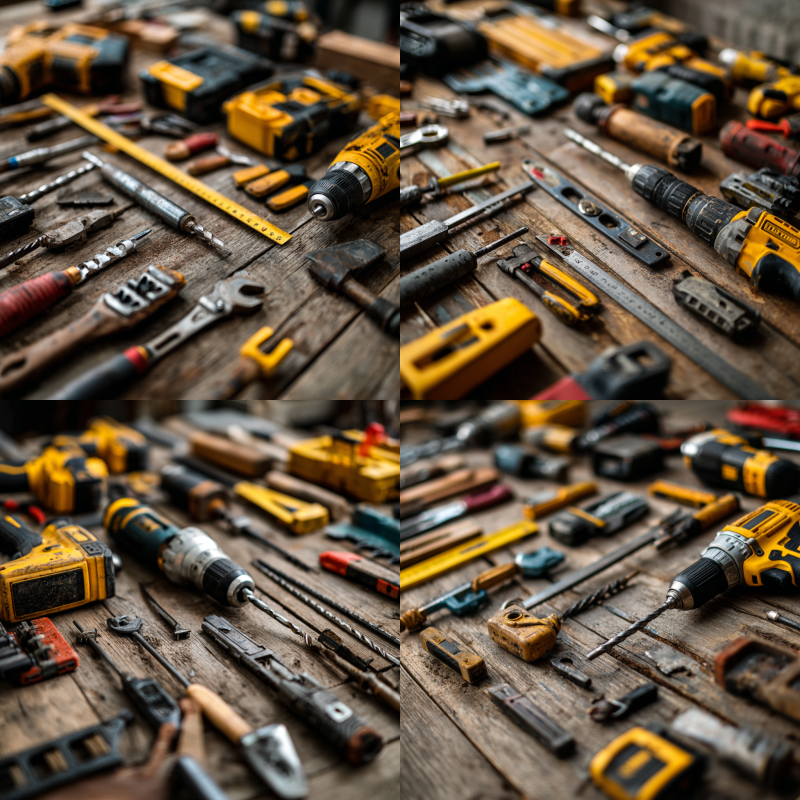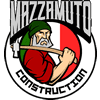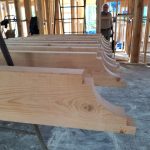
How to Choose the Right Remodeling Tools for Your Project
How to choose the right remodeling tools
Remodeling any part of your home, whether it is a small bathroom remodeling upgrade or an entire home addition, requires the right set of tools. Having reliable equipment makes your project more efficient, helps maintain safety, and achieves a professional-looking outcome. In fact, professionals like Mazzamuto Construction, which has been serving Martinez, CA, since 1960, often emphasize that knowing how to choose the right remodeling tools can slash time spent on fix-ups down the road. You want to feel confident tackling your project, and selecting suitable tools is your first step toward success.
Below, you will learn essential steps to help you choose the right remodeling tools for your project. We will explore factors like project scope, your skill level, and when to call in pros who already have specialized tools for the job.
Essential steps to choose the right remodeling tools
Your remodeling journey starts with careful planning. Before you pick a hammer or a power drill, take a moment to break down your project and determine which tools will best meet your needs. A clear framework will help you avoid investing in unnecessary items or buying low-grade equipment that requires frequent replacement.
Define your project scope
Begin by clarifying exactly what you plan to tackle:
- Are you working on a kitchen renovation that involves cabinetry, countertops, and electrical work?
- Maybe you are upgrading or expanding your bathroom and researching what are the latest bathroom remodeling trends?
- Is the project purely cosmetic, or does it involve structural changes too?
Establishing the full scope ensures you will not miss critical tools. For instance, a simple paint job may need just brushes, rollers, and tape. Meanwhile, a larger home remodeling project might demand power saws, leveling instruments, tile cutters, and more specialized gear. By understanding your scope, you can set a realistic budget, decide which tools to purchase, and plan what you might rent.
Assess your skill level
Newer DIYers should start with smaller tasks. If you are a beginner:
- Look for multi-purpose tools, such as a combination drill-driver, which is easier to handle than multiple specialized drills.
- Consider lightweight versions of common power tools. They are often easier to control and may be marketed as “compact” or “beginner-friendly.”
Experienced users can handle professional-grade equipment. This advanced gear saves time but costs more. Mazzamuto Construction recommends matching tools to your comfort level for safety and quality outcomes.
Weigh brand reputation and reviews
Not all tools are created equal. Some brands are known for their longevity and consistent performance. Others might be cheaper upfront but break down after a few projects. Do a quick check online or ask experienced contractors:
- Which brands are reputed for durability in your project category (e.g., tile saws, power drills, paint sprayers)?
- Are parts or replacement blades readily available?
- Do local hardware stores stock accessories for that brand?
Professional remodelers tend to gravitate toward tool manufacturers that offer strong warranties and dependable customer service. You do not want to be hunting for a specialty blade in the middle of your remodeling project.
Look at long-term maintenance
Remodeling tools require basic care. If your equipment is electric or battery-operated, you will need to store and charge them properly. Keep them clean and lubricated, and replace worn parts. Even hand tools, such as wrenches and screwdrivers, need occasional wiping or oiling to prevent rust.
If you are pressed for time or do not have extra space for storage and upkeep, you might look into renting certain power tools whenever you need them. On the other hand, owning your own set can be helpful if you anticipate recurring projects, like fence repairs or routine property maintenance down the road.
Consider buying vs renting
Once you identify needed tools, decide: buy or rent?
Buying offers convenience and reusability but costs more upfront. Renting is economical for one-time tasks like concrete mixers or tile cutters.
Consider these factors:
- Frequency of use: Will you need the tool regularly, or is this likely a one-time job?
- Time frame: A short project might be cheaper with a daily tool rental, but extended projects can make buying more appealing.
- Storage and transport: Renting spares you the inconvenience of storing bulky items or moving them around.
Many homeowners mix both approaches for practical balance.
Why quality matters more than cost
Good news: quality tools can pay for themselves by offering safer operation and longer lifespans. A flimsy tape measure that sags after a few uses or a power saw with poor torque control can slow you down and even lead to costly mistakes.
- Safety: High-grade drills and saws usually come with robust safety locks and better shielding.
- Efficiency: Quality blades cut cleaner and faster, reducing jagged edges and the need for repeated adjustments.
- Reliability: A reputable hammer can last you decades. Frequent breakdowns are far more irritating (and expensive) than any savings you gain upfront.
Where possible, check for certifications like UL (Underwriters Laboratories) for electrical safety. Speak with hardware suppliers or professionals to see what they recommend. Mazzamuto Construction, for instance, has used many of the same trusted brands for generations, steering homeowners toward gear that stands the test of time.
When to rely on professional help
Sometimes, the best way to choose the right remodeling tools is to have an experienced partner guiding you. If you are tackling complex updates or full-scale renovations, consider hiring a professional remodeler. You will benefit from:
- Expertise: They already know which tools handle specific materials best (wood, tile, drywall).
- Insurance: Professional crews should carry insurance to protect you if a tool mishap occurs.
- Time savings: Skilled teams can do in hours what might take a novice all weekend.
Mazzamuto Construction, serving Martinez since 1960, is known for its cabinet and countertop upgrades, roofing work, and full-scale remodeling services. With a trusted professional, you reduce risk and stress while investing in the added security of skilled labor. Even if you handle some tasks yourself, reaching out to pros for bigger phases like installing support beams or redoing electrical wiring makes sense.
How to Choose the Right Remodeling Tools Effectively
Selecting the right equipment is the foundation of a successful remodel. Understanding how to choose the right remodeling tools based on your project’s scope, your DIY experience, and your budget ensures a safer, smoother, and more efficient process. Whether you purchase or rent, always invest in quality and safety. When in doubt, consult professionals like Mazzamuto Construction to make sure you’re using the tools that match your vision and ability. With the right strategy and equipment, your dream remodel can come to life exactly as you imagined.
Ready to Plan Your Remodel with Confidence?
Mazzamuto Construction has delivered trusted, high-quality renovations for over 60 years. Know exactly how much a professional remodeler costs with no guesswork. Schedule Your Consultation Today!
Frequently Asked Questions
1. Best remodeling tools for DIY projects?
DIY remodelers need essentials: 1. Cordless drill, 2. Circular saw, 3. Level, 4. Stud finder, 5. Utility knife, 6. Tape measure, 7. Clamps, 8. Multi-tool, 9. Safety gear. These nine tools provide affordability, versatility, and practicality for most small remodeling projects.
2. What tools professional remodelers use?
Professionals rely on advanced gear: 1. Table saw, 2. Miter saw, 3. Rotary hammer, 4. Impact driver, 5. Laser level, 6. Commercial sander, 7. Tile saw, 8. Framing nailer, 9. Oscillating tool. These ensure precision, durability, and efficiency for demanding remodeling and construction work.
3. How to choose the right remodeling tools?
Selecting wisely matters: 1. Assess project scope, 2. Consider materials, 3. Prioritize frequent-use tools, 4. Rent specialty tools, 5. Check ergonomics, 6. Compare brands, 7. Pick cordless or corded, 8. Invest in safety gear, 9. Balance cost and quality. This approach ensures smarter choices.
4. How do I maintain power tools properly?
Regularly clean off debris and sawdust, and ensure moving parts are well-lubricated. Charge batteries fully before storage if the tool is battery-operated. Store equipment in a dry area to prevent rust or electrical damage. Always follow safety instructions from the manufacturer.
5. What if I cannot decide on the tools I need?
Seek advice from a local hardware store or professionals like what does a professional remodeler do. They can help you pinpoint essential tools and advise on upgrades based on your specific project scope.
6. Which tools are essential for kitchen or bathroom remodels?
A reliable drill with multiple bits, a circular saw (or table saw if you have the space), a quality level, a wet tile cutter (for bathrooms and kitchens with tiled surfaces), and protective gear are the big five. Also remember to factor in specialized plumbing or electrical tools if your project includes wiring or pipe replacements.
Key takeaways
- Clarify your project scope to determine which tools you truly need.
- Match tool choices to your skill level, especially if you are a newer DIYer.
- Compare the pros and cons of renting vs buying based on project length and budget.
- Prioritize safety and quality, even if it means spending more up front.




